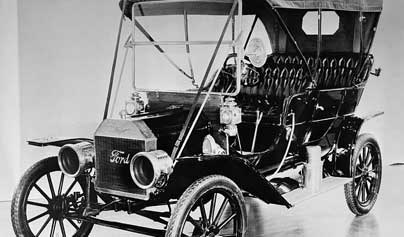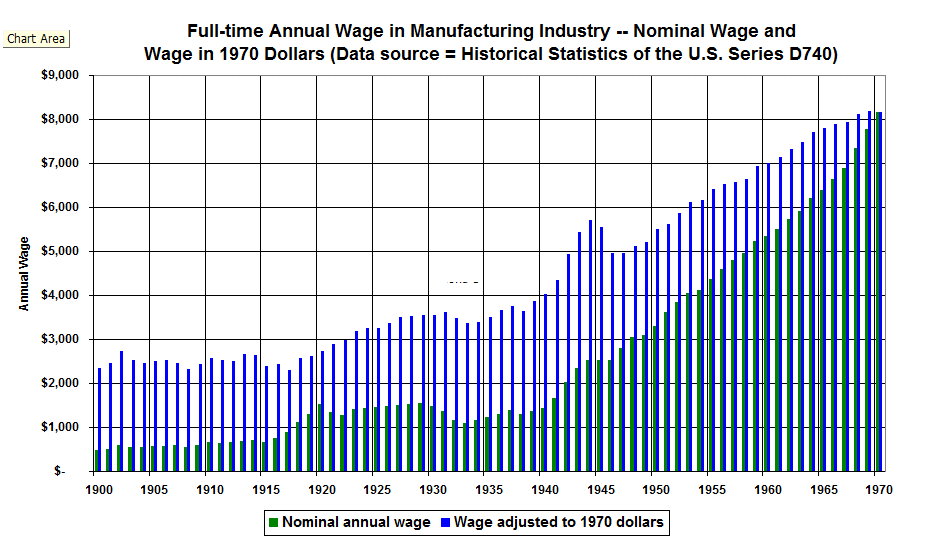"Any color - so long as it's black." -Henry Ford
The Model T was first introduced on April 1st, 1908. Although it wasn’t the first car produced, it was the first car to be produced in large volumes. It was more affordable to the public because Henry limited the features of the Model T. Henry's idea was that the Model T should be solely produced for transportation. There was only one design and one color, black, available. Its affordability to the public allowed more people to be able to purchase one. In 1918, over one half of the cars on the road in the United States were Model Ts. Henry made millions of dollars in the first ten years of the production.
The use of the Model T was more practical than using a bicycle or a horse drawn carriage. The Model T provided faster transportation than the carriage or bicycle. It cost less than having to care for a horse. The only expenses of driving the Model T were the gasoline and the occasional tune up. Gasoline was $0.28 a gallon and you could go 25 miles on one gallon using the Model T. It was designed for durability and to travel over the rough roads.
The wide spread use of the Model T helped develop more sophisticated roads and a transportation infrastructure. Before the roads, were very short and poorly built, usually of trees or bricks. After the Model T, roads were built of better quality, using asphalt. Longer and more elaborate roads were built. With more convenient transportations, cities were able to trade and inform each other much quicker. Cities were able to expand due to the improved ability to travel from one place to another.

An original Model T Ford.
“Quality means doing it right when no one is looking.”
-Henry Ford
On April 1st, 1913, the first mass production assembly line began producing Model Ts at the Ford Motor Company factory in Detroit, Michigan. Although it was Henry Ford’s original idea, he was helped by several others during the creation of the assembly line. This increased productivity because it was faster to manufacture items using an assembly line. Instead of 728 minutes to produce the chassis for the Model T it took only 93 minutes with the use of the assembly line. After the initial use of the assembly line, the price of the Model T dropped from $950 to $575 and later dropped as low as $280.
Since Henry designed the assembly to have interchangeable part other companies started using a mass assembly line during their manufacturing process. Other companies who began using assembly lines were able to produce three times more than before. With the wide spread use of the assembly line, many products became more affordable due to the speed of manufacturing and increased amount of production. With vast amounts of products available and more affordable, it improved the overall quality of life.

This picture of the orginal assembly line was taken towards the end of the production process of the Model T.
-Henry Ford
In 1914, Henry Ford raised the minimum wage of his factory from $2.86 per nine hour day to $5.00 per eight hour day, thus nearly doubling his workers salary. Henry was able to make these changes because of the profits from sales of the Model T. Henry decided to reward his workers because he thought that if his workers worked hard and earned him money, he should repay them. The changes that Henry made to the work environment later became the foundations for the labor laws of today.
With these changes, the quality of his employees’ life was greatly improved. By shortening the work day, families had more time to spend with each other. For the first time, his employees had some disposable income to spend on their families. With the extra money the workers were making, they were able to buy nicer houses, fancier clothes, and toys for their children. This stimulated the economy and created a middle class in

This Graph shows the annual salary of Ford employees in blue and the annual salary of other industrial employees in green from 1900 to 1970.